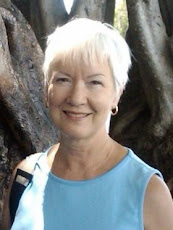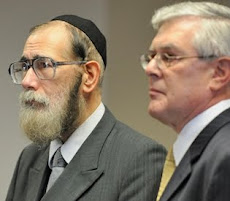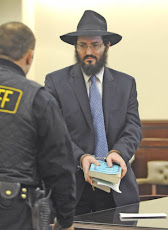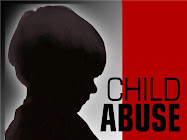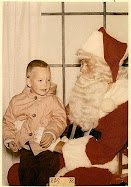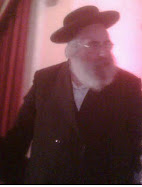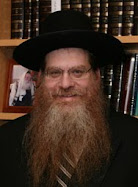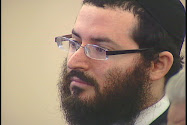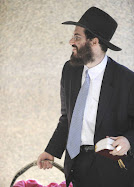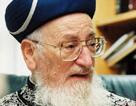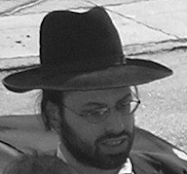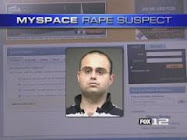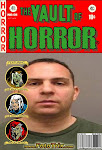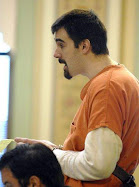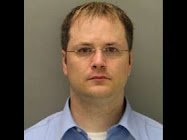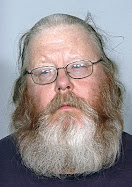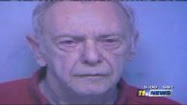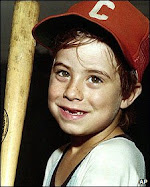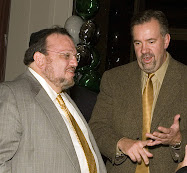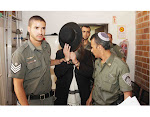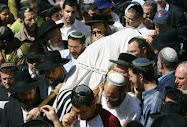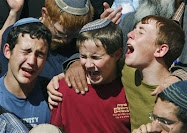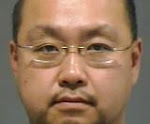Why is this pig smiling?
Why is Nussbaum employed by Yeshiva of Brooklyn?
How is Mandel seriously a "rabbi" when he openly provides refuge to a sadistic pedophile, but not only that - surrounds the predator with prey which to prey upon?
Mandel is a sinner. The big cheese of Agudas Yisorel is merely a reflection of a monstrous 'Jew' trying in no uncertain terms to undermine our better judgment and wit. He reasons, if he put on an act of piousness, mainly carrying about business as usual, no one would challenge the pile of debris swept under the rug. The yob tyrant/rasha knows the sad truth, most yidden look the other way, not wishing to be associated with any stigma.
in 2011, many folks are intelligent enough to see past that, but many are still not. Unfortunately, too many remain shortsighted, most having already buried their heads in the sand a long time ago.
Cathy Spatz Widom
Cathy Spatz Widom is Professor of Criminal Justice and Psychology at the State University of New York in Albany, and a recognized national expert on the causes and consequences of child abuse and neglect. Her highly respected research includes an important and ongoing longitudinal study of a large sample of children with confirmed severe abuse in childhood. Such prospective studies, in which abused children are followed over time, are particularly valuable in the present context because they can be used to study current memories of people who were definitely abused as children. In the two studies below, one on physical abuse on the other sexual abuse, the findings suggest that for both forms of abuse the accuracy of retrospective reports depends on a complex array of factors, including sample selection and assessment methods, whether the person is male or female, and current mental health status (e.g., suffering from depression or not).
Widom, C. S. & Shepard, R. L. (1996). Accuracy of adult recollections of childhood victimization: Part 1. Childhood physical abuse. Psychological Assessment, 8, 412-421.
Abstract: Using data from a study with prospective-cohorts design in which children who were physically abused, sexually abused, or neglected about 20 years ago were followed up along with a matched control group, accuracy of adult recollections of childhood physical abuse was assessed. Two hour in-person interviews were conducted in young adulthood with 1,196 of the original 1,575 participants. Two measures (including the Conflict Tactics Scale) were used to assess histories of childhood physical abuse. Results indicate good discriminant validity and predictive efficiency of the self-report measures, despite substantial underreporting by physically abused respondents. Tests of construct validity reveal shared method variance, with self-report measures predicting self-reported violence and official reports of physical abuse predicting arrests for violence. Findings are discussed in the context of other research on the accuracy of adult recollections of childhood experiences. Excerpts from the Discussion:
". . . In many ways, these findings indicate accuracy in retrospective self-reports and good discriminant validity. Individuals who were physically abused, based on official records, retrospectively reported the highest rates of childhood physical abuse in the sample. On the CTS (Severe Violence and Very Severe Violence subscales) and the SRCAP [Self-Report Measure of Childhood Physical Abuse], physically abused individuals reported significantly higher rates of physical abuse than did individuals who had experienced sexual abuse or neglect in childhood and individuals who were part of a matched control group. The extent of remembering (i.e., the percentage of individuals who had been physically abused who reported having been physically abused on one of the measures used here) is in line with previous research. These results also reveal that the extent of reporting a history of childhood physical abuse varied dramatically by the criterion (or measure) used.
"At the same time, there is a problem in underreporting of physical abuse. A substantial group of individuals who were physically abused do not report having been physically abused in childhood. Of the 110 people in the sample who had documented cases of physical abuse in childhood, 60-62% reported abuse using the CTS-VSV and SRCAP. This means that approximately 40% of individuals with documented histories of physical abuse did not report. Whether these people did not report (as suggested by Della Femina et al., 1990) because of embarrassment, a wish to protect parents, a sense of having deserved the abuse, a conscious wish to forget the past, or lack of confidence in or rapport with the interviewer, we do not know. But these findings suggest that a substantial minority would not be included in retrospective self-report assessments of childhood physical abuse. A more lenient criterion (such as the CTS-Minor Violence subscale) would capture most of the physically abused people (see Table 2); however, this criterion also identifies 92% of the sexual abuse and neglect cases and 86% of the control participants as having been physically abused in childhood. Using the CTS-Minor Violence subscale, the rate of false positives (as presented in Table 5) approaches almost half the sample. These findings illustrate that the rate of false positives is directly related to the measure of childhood physical abuse used. . .
"Henry et al. (1994) concluded that reliance on retrospective reports about psychosocial variables should be treated with caution. They suggested that "the use of retrospective reports should be limited to testing hypotheses about the relative standing of individuals in a distribution and should not be used to test hypotheses that demand precision in estimating event frequencies and event dates" (p. 92). We support their recommendation to use caution against overly simplistic interpretations that take retrospective reports at face value.
"These methodological problems pose significant challenges to researchers in the field. Notwithstanding the real difficulties involved, there is a critical need to develop reliable and valid ways to assess histories of childhood victimization. . . ."
Widom, C. S. & Morris, S. (1997). Accuracy of adult recollections of childhood victimization: Part 2. Childhood sexual abuse. Psychological Assessment, 8, 412-421.
Abstract: Questions have been raised about the accuracy of retrospective self-reported information about childhood sexual abuse. Using data from a prospective-cohorts-design study, a large group of children who were sexually and physically abused or neglected approximately 20 years ago were followed up and compared with a matched control group. Accuracy of adult recollections of childhood sexual abuse was assessed using 4 different measures, completed in the context of a 2-hr in-person interview in young adulthood ( N = 1, 196). Results indicate gender differences in reporting and accuracy, substantial underreporting by sexually abused respondents in general, good discriminant validity and predictive efficiency of self-report measures for women, and some support for the construct validity of the measures. Implications for researchers and practitioners are discussed. Excerpts from the Introduction:
". . . [A] significant risk of distortion and loss of information is associated with the recollection of events from a prior time period. If asked to recall childhood events, it is possible that respondents forget or redefine their behaviors in accordance with later life circumstances or their current situation. It is also possible that a person might redefine someone else's behavior in light of current knowledge. Unconscious denial (or repression of childhood traumatic events) may also be at work in preventing the recollection of severe cases of childhood abuse. Furthermore, given society's disapproval of various forms of family violence, a person may be embarrassed to report such experiences or unwilling to reveal such private information in the context of an interview setting. Thus, for a variety of reasons, there may be considerable slippage in accuracy in retrospective reporting. . . .
"Empirical findings suggest that a person's cognitive appraisal of life events strongly influences his or her response (Lazarus & Launier, 1978). The same event may be perceived by different individuals as irrelevant, benign, positive, or threatening and harmful. It is likely that a child's cognitive appraisal of early childhood events will also determine at least in part whether they are experienced as neutral, negative, or harmful. The child's perception might reflect events occurring subsequent to the abuse experience as well as the child's perception of the experience. Theoretically, this is also important because long-term consequences may depend on the person's awareness or memory of the earlier abusive experience or experiences. Considering Lazarus and Folkman's (1984) discussion of the role of cognitive appraisal in mediating one's response to stress, it may be that children who do not define their early childhood experiences as abusive will show better outcomes.
"There may also be gender differences in reporting or willingness to report childhood sexual abuse for a variety of reasons. Female psychiatric patients have been found more likely than male patients to report histories of sexual abuse. . ., female patients have been found more likely than male patients to reveal childhood sexual assault experiences to therapists (Jacobson & Richardson, 1987), and women have reported greater likelihood than men of being a victim of sexual assault (Burnam et al., 1988). Social pressures against reporting early childhood sexual experiences and embarrassment may lead to greater reluctance among men to report, whereas it may be socially more acceptable for women to report such histories. On the other hand, some of the apparent underreporting may be associated with the small number of male victims of sexual abuse in most studies (Finkelhor, 1990).
"One approach to assessing the power or efficiency of retrospective self-report measures is to calculate the relative improvement over chance (RIOC). Loeber and Dishion (1983) devised this index to represent the improvement over chance as a function of the range of its possible predictive efficiency. . . .
"A second approach to establishing the usefulness of retrospective reports of childhood sexual abuse is based on the construct validation process, one of the techniques used to establish the psychometric qualities of assessment instruments. In addition to establishing the validity of retrospective self-report measures using "known groups," construct validity attempts to assess how these self-report measures theoretically relate to other variables or indexes. That is, there are certain theoretical expectations about the way people who have a history of childhood sexual abuse should behave or should manifest certain outcomes. Based on logical relationships, then, tests of construct validity can offer evidence that these measures do or do not measure childhood sexual abuse, without providing definitive proof."
"To validate our retrospective self-report measures of childhood sexual abuse, three outcomes frequently associated with childhood sexual abuse (depression, alcohol problems, and suicide attempts) will be assessed. Ideally, retrospective reports of childhood sexual abuse should relate to subsequent outcomes similar to the way official reports of childhood sexual abuse relate to these outcomes.
Excerpts from the Discussion:
"We examined the accuracy of four retrospective self-report measures of childhood sexual abuse. In general, we found that women and men differ in the extent to which they recall or report having experienced childhood sexual abuse. Approximately 16% of men with documented cases of sexual abuse considered their early childhood experiences sexual abuse, compared with 64% of women with documented cases of sexual abuse. These gender differences may reflect inadequate measurement techniques or an unwillingness on the part of men to disclose this information. They may also reflect differences in the meaning of these behaviors for men and women, particularly viewed in a cultural context. Gender differences in reporting and in perceptions of early childhood experiences may reflect early socialization experiences in which men learn to view these behaviors as nonpredatory and nonabusive. Many of the sexual experiences considered to be sexual abuse (e.g., showing/touching sex organs, kissing in a sexual way) may be seen as developmental rites of passage, part of a learning process. Men reported more sexual experiences in which they touched the other person. Social pressures against reporting certain kinds of early childhood experiences may also lead to greater reluctance among men to report. Future research ought to examine whether the underreporting by men is due to embarrassment or to perceptions about sexual experiences.
"In our examination of the validity of retrospective self-report measures of childhood sexual abuse using known groups, we also found gender differences in the discriminant validity of the four measures. Our results indicate good discriminant validity for the self-report measures used here for women but much less so for men. A higher percentage of women with official histories of childhood sexual abuse recall or report sexual abuse in young adulthood than do women with histories of physical abuse or neglect, who in turn report higher levels than nonabused and nonneglected controls (Table 3). On the other hand, men in our sample with documented cases of sexual abuse do not report higher levels of sexual experiences (any sex before age 12) than do men with documented cases of physical abuse or neglect or control men. Sexually abused men are significantly more likely to consider that they were sexually abused and to report more often having had sex against their will than are controls, but so are physically abused or neglected men. It is noteworthy that more physically abused or neglected men reported having had sex with an older person than did sexually abused men, none of whom reported having had this experience in childhood.
"Overall, we found substantial underreporting of sexual abuse among known victims of childhood sexual abuse. This is particularly impressive because these are court-substantiated (documented) cases of childhood sexual abuse. Much attention has been paid to the lack of recall or failure to report histories of childhood sexual abuse among known victims of abuse. Although this lack of reporting is significant, it may not be surprising when viewed in a somewhat different context. Nonreporting by crime victims in the context of victimization surveys has been studied for a number of years (Garofalo & Hindelang, 1977), and problems with respondent embarrassment about the incident or "protective mechanisms," or simply memory decay or forgetting have been described. . . .
"For women, we found strong relationships between retrospective self-report measures of childhood sexual abuse and the three outcomes examined here: DSM-III-R diagnoses of depression and alcohol abuse/dependence and suicide attempts. We also found that women with documented cases of childhood sexual abuse who were followed up prospectively into young adulthood were at increased risk for having alcohol abuse/dependence diagnosis and for making suicide attempts.
"It was surprising that we did not find that women or men with documented cases of childhood sexual abuse were at increased risk of being diagnosed with depression according to DSM-III-R criteria, despite the widespread belief that childhood sexual abuse leads to depression. We did, however, find a significant relationship between retrospective self-report measures of childhood sexual abuse and depression diagnosis. Thus, this pattern of findings suggests that the relationship between childhood sexual abuse and depression is complicated and may depend on a person's cognitive appraisal of early life events (cf. Lazarus & Folkman, 1984). Individuals who meet the criteria for a DSM-III-R depression diagnosis (current or remitted) are more likely to recall having been sexually abused in childhood than individuals without depression diagnoses, although individuals with documented cases of sexual abuse in childhood who were followed up into young adulthood were not at increased risk of receiving a depression diagnosis. This was true for men as well as women in this sample. . . .
"The underreporting we found means that there is a substantial group of people with documented histories of childhood sexual abuse who do not report these experiences when asked in young adulthood to do so. Whether this is due to loss of memory, denial, or embarrassment is not known. However, there are important implications from these these findings for other researchers and clinicians. For researchers, the underreporting of childhood sexual abuse poses a serious concern for epidemiological research, especially that which involves a large proportion of men. For clinicians, these findings reinforce the need to develop more sensitive techniques to elicit this information from men.
========================================================================
'Gedolim' CLUELESS !!! Moetzes Gedolei Hatora's outlook in 2011 is still: don't report sexual abuse to authorities, try to squash the facts internally via intimidation tactics. SHAMEFUL!
Mayor Bloomberg crowed Monday that city streets have never been safer - day or night - for women, but some skeptical
New York ladies suggested he take a walk in their neighborhoods.
At a tour of a Queens school Monday night, the mayor proudly declared: "People don't remember 10 years ago. They've really already forgotten when you couldn't walk the streets."
"Today, a woman could walk in virtually every neighborhood in this city during the day and not look over her shoulder, and most neighborhoods at night," he added.
But
Bronx resident
Carla Banks, 31, said living on the upper East Side has left the mayor clueless about what women face.
"Bloomberg's trippin'," said Banks, of
Kingsbridge Heights. "This isn't the upper East Side. He's definitely out of touch with what women deal with in the Bronx."
Her pal
Devon Irving, 29, said he should take a solo stroll down her block. "I know the mayor doesn't have to worry about walking home from the subway, but I sure do," said Irving, of
Mount Eden. "If he thinks we don't still have to watch our backs, he's crazy."
Nora Nestor, 32, of
Crown Heights,
Brooklyn, said she wouldn't change where she lives, but she never lets her guard down.
"I love my neighborhood. I feel safe in it, but I wouldn't walk anywhere in New York without being aware of what's behind my shoulder," she said. "As a woman, you have to be aware of your surroundings."
Bedford-Stuyvesant resident
Elizabeth Truemper, 25, said some parts of Brooklyn are more dangerous for women than men.
"There's no way I'd walk from Bed-Stuy to
Bushwick, but I have male friends that walk from Bushwick to Bed-Stuy," she said.
The mayor boasted about female safety after
Rabbi Yaakov Bender, the dean of
Yeshiva Darchei Torah School in
Far Rockaway, thanked him and
NYPD Commissioner Raymond Kelly for keeping the streets safe.
But at a community meeting the mayor later attended in Far Rockaway,
Beverly Champion didn't second the sentiment.
She complained to the mayor about crime in housing developments, saying, "I've lived here all my life, and I've never seen it as worse." Champion said she doesn't feel safe walking around with her purse and laughed when told what the mayor had said earlier about crime.
"He's not telling the truth," she said. "He just takes the reports that they give him, but he doesn't know."
Even women with tony
Manhattan zip codes called the mayor out on his comments.
"He's a bit off the mark," said
Carson Demmons, 26, of
NoHo. "I've lived in neighborhoods where I wouldn't give it a second thought during the day, but it was a whole different story at night. You still need to keep your wits about you."
Bloomberg's boasts did get some support - from women who live in his neighborhood.
"Yes, it has gotten better," said upper East Sider Theresa Ackerly, 43. "This nabe changed a lot. Back in the '80s, there were a lot of gangs.
Mayor Bloomberg is doing all right in terms of crime."
Meanwhile, at the community meeting, a crowd of 200 booed the mayor and the Department of Transportation Queens Borough commissioner,
Maura McCarthy, when they spoke of planned bike lanes for the Rockaways.
Bloomberg later admitted that the lanes drew strong reactions from supporters and opponents.
"Bicycle lanes are one of the more controversial things, obviously," he said. "Some people love them and some people hate them. ... It's probably true that in many of these cases we could do a better job, and we're going to try to do that."
















































